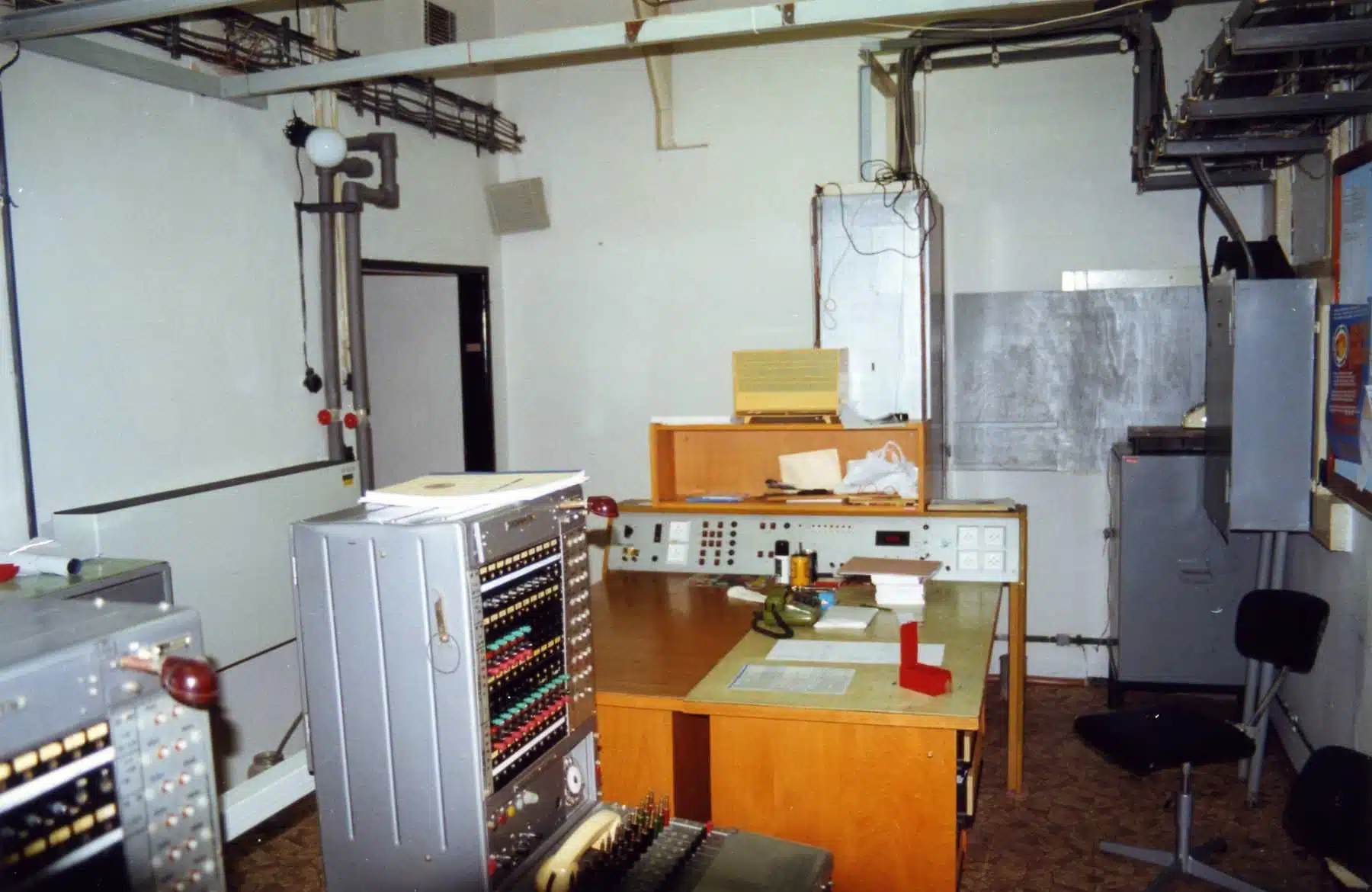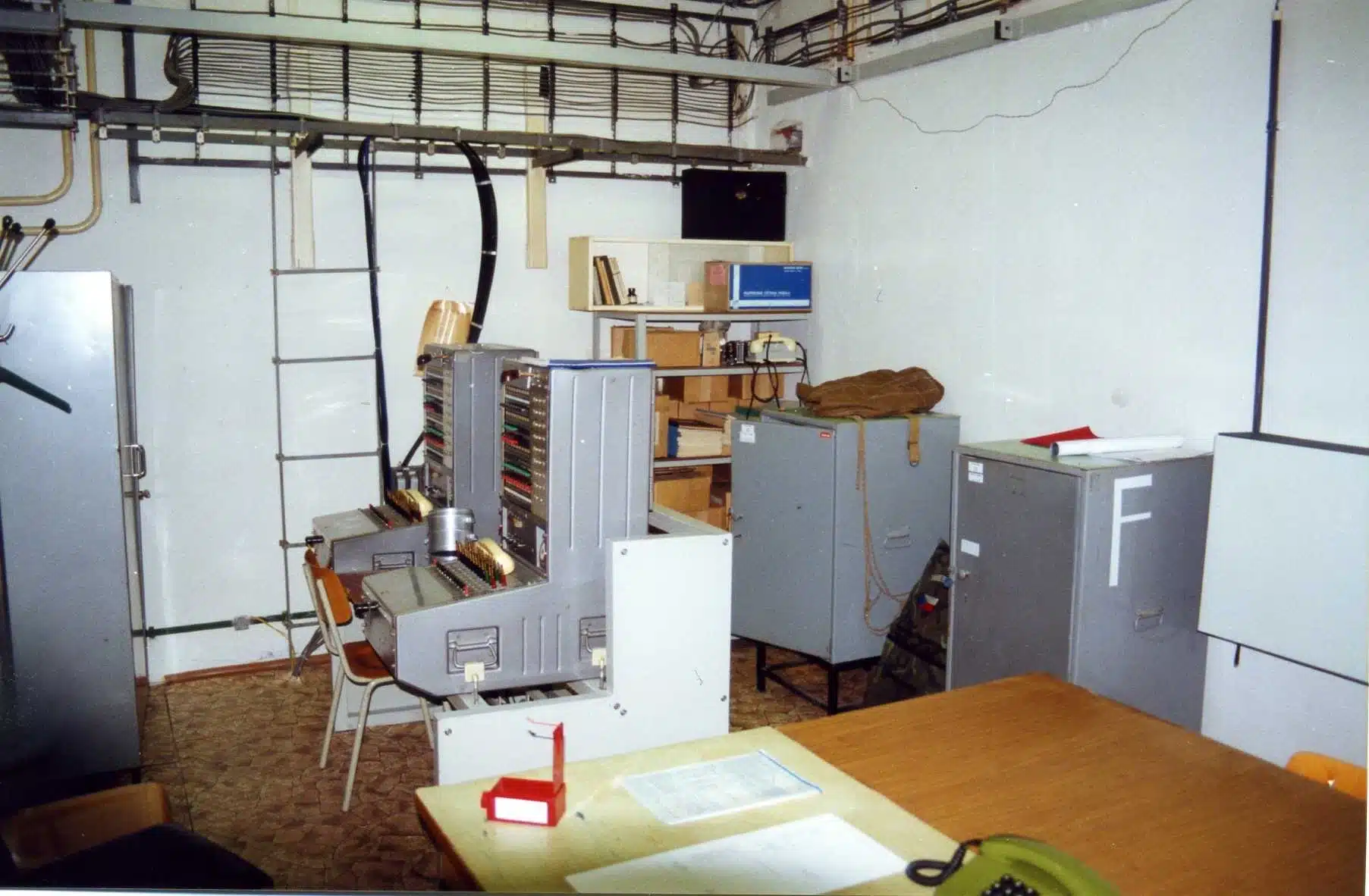Bunker technology
The military facilities, which were comparable in scope and purpose to our bunker, were equipped with the most modern technology for their time. It was the same in the Přáslavice bunker.
The building was used exclusively for telecommunication purposes and most of the technologies you will find here were subordinated to this.
In the 1970s, one of the most important communication elements was the remote writing system, known as telex, which allowed text messages to be transmitted quickly and reliably.
Radio communication systems, including shortwave and ultra-shortwave broadcasting, were key to intercontinental communication at a time when satellite and digital technologies were not yet universally available. These systems allowed the great powers to maintain contact even in the event of a nuclear war.
In an effort to secure communications and protect them from eavesdropping on the enemy, advanced encryption techniques were also developed during the Cold War.
We present the key communication technologies located in our building on this page. If you want to learn more about them and see them in real life, don’t hesitate to come for a tour.
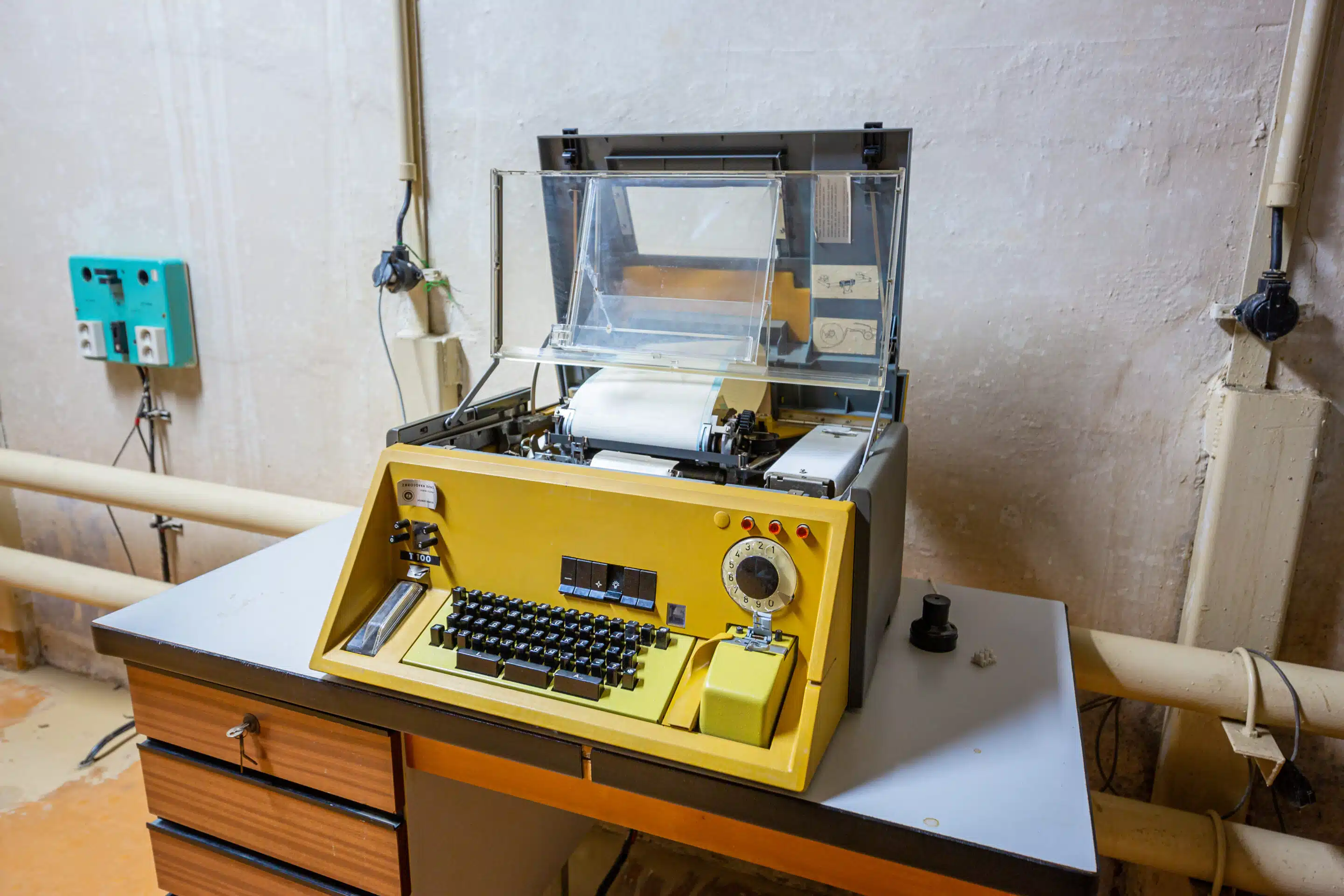
Teletype
A telex is an electromechanical device used for remote communication. This device allows you to send and receive written text via telephone or telegraph network. Its operation is similar to a typewriter, but with the ability to transmit information at a distance.
During the tour, you can see a working specimen.
International Cable
Coaxial Arterial 1
The Přáslavice bunker was built as a reinforced amplification station for the long-distance cable network. It also served the international coaxial cable trunk MKKM-1 Berlin – Moscow.
During VIP tours , you can also visit the cable chambers and see what these cables look like.
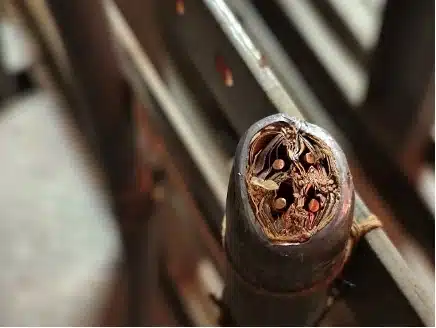
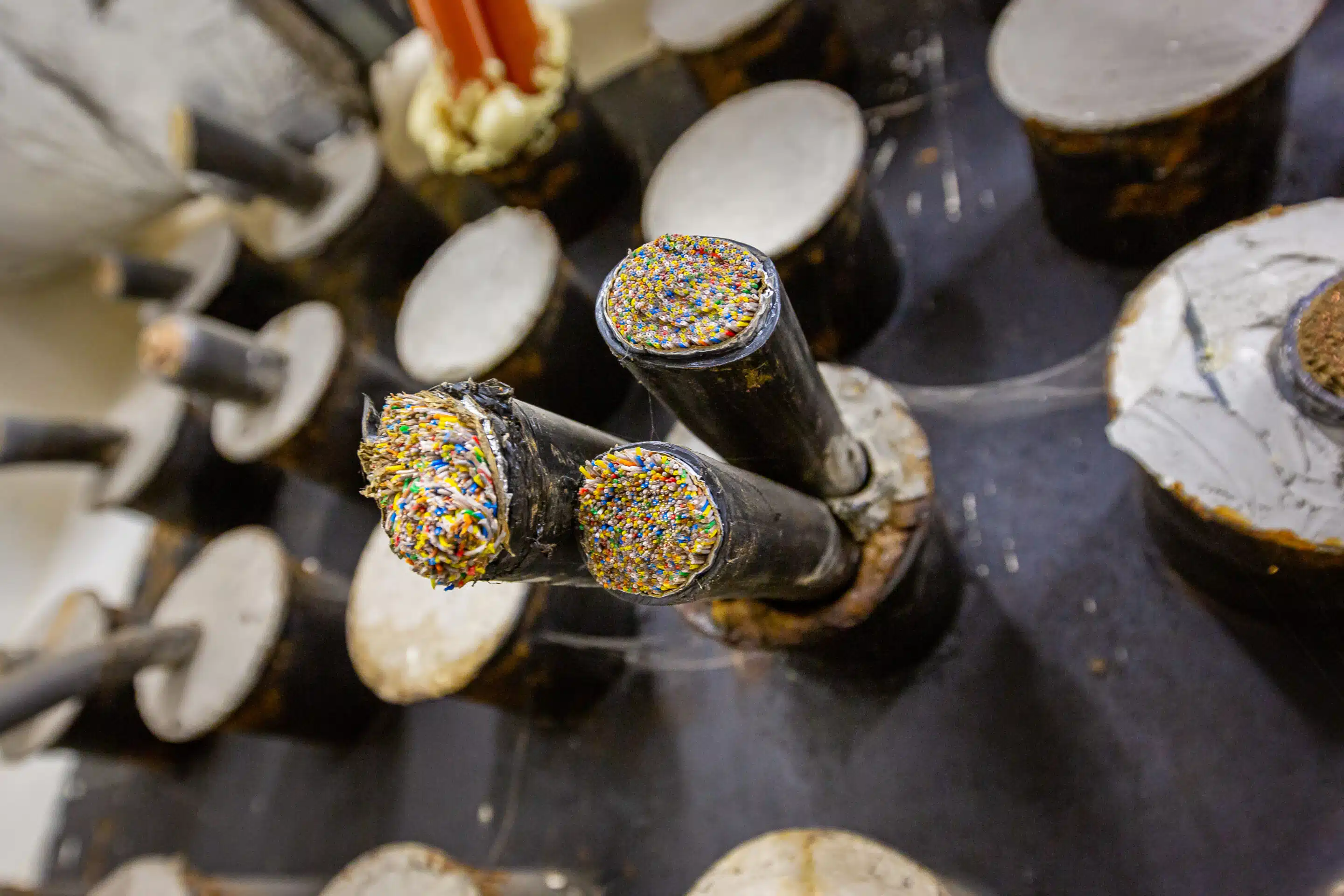
K1920 transmission technology
For the operation of the International Cable Coaxial Trunk Road, the K1920 technology, which was able to transmit up to 1920 parallel calls, was used.
It seems funny today, but in the seventies of the last century it was something unbelievable.
Private Branch Exchange CA102
It is one of the first types of automatic exchanges originally produced under a Hungarian license. He handled all the communication inside the bunker.
During the tour, it is possible to see a functional specimen that can still make contact and compose a call today. You can take a closer look at this technological unique control panel with cross switches.
The room with the switchboard is located on the VIP tour circuit. During such a tour, you can try and observe up close how to make a call.
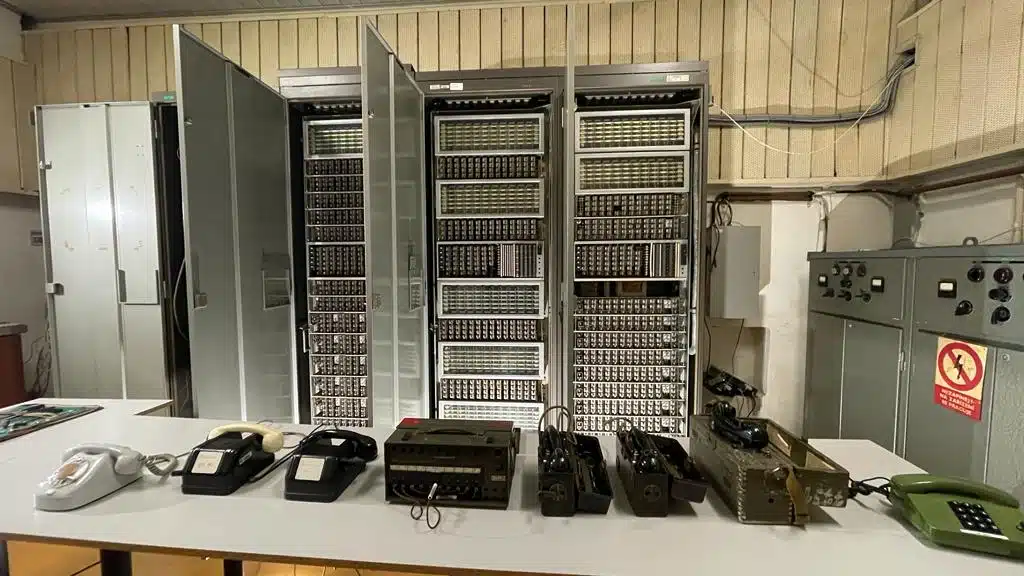
Encryption of teleprinters
To prevent communication from being monitored, it was important to encrypt some channels. In the area of the “army” floor of the bunker, there was an encryption workplace for teleprinters and several telex workplaces for encrypted and unencrypted communication.
Telephone call concealers
Several concealers were used to ensure secure voice communication. This technology was supplied by the Soviet Army and, according to eyewitnesses, was taken away as part of the withdrawal of troops in the 1990s. Unfortunately, the visitor will not see it on the tour.
Government Secret Liaison Section
In a special section of the bunker dedicated to secret police units not subordinate to the Ministry of Defense, but directly subordinate to the then Ministry of the Interior, there were technologies for the implementation of wiretapping.
In the pictures you can see period photographs of the workplace of the “army” floor.
If you want to experience the unique atmosphere of this building, do not hesitate to visit us.
